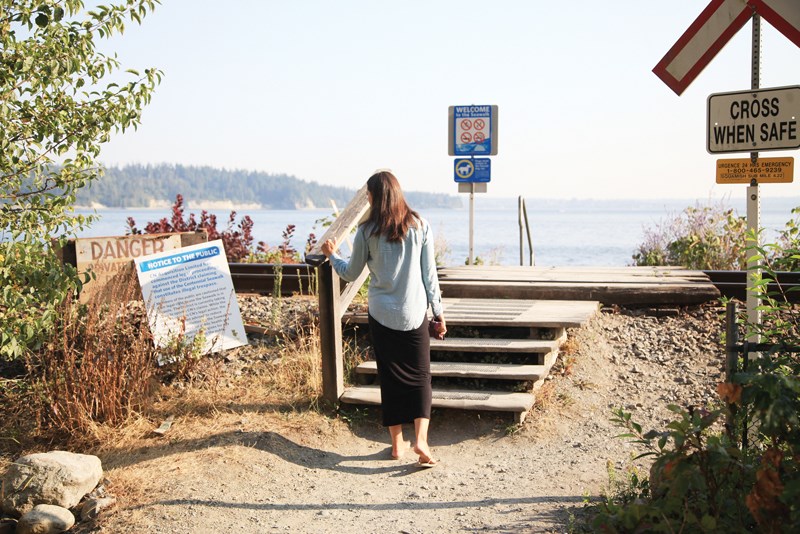The District of West Vancouver will face off against CN Rail in a tribunal hearing this fall over access to the municipality’s popular waterfront Seawalk.
The two sides have been locked in a legal dispute over public access to parts of the 50-year-old Seawalk that are built on rail rights-of-way.
In February of this year, CN Acquisition Ltd. – a subsidiary of CN – filed a lawsuit against the municipality in B.C. Supreme Court, asking that the public be kicked off the local Seawalk unless the district agrees to pay potentially millions of dollars a year in rent to CN Rail.
The lawsuit also seeks damages for the district’s use of the land and for overdue rental payments.
The municipality fired back with an application to the Canadian Transportation Agency, a quasi-judicial federal agency that oversees railway operations. In that, West Vancouver asked for an order allowing the municipality continued use of the Seawalk over the CN right-of-way, saying it forms “an integral part of the system of pedestrian walkways in place in West Vancouver.”
Lawyers for the two sides are now set to argue their cases in an oral hearing before the federal agency on Oct. 25 and 26, which will be open to the public. The tribunal hearing the case in Vancouver has the power to impose a binding decision, similar to a court.
According to documents filed by both sides, both a lease and rental payments for use of the land had lapsed for about two decades. CN and West Vancouver had more recently been discussing a new lease arrangement. But the municipality balked after CN asked for a multimillion-dollar payment.
“CN has made it clear that it considers itself entitled to market rents for the land,” the district wrote in its application, “and has proposed an annual rent of $3.7 million.”
West Vancouver countered with a proposal to pay $12,500 a year to CN.
The public still has access to the Seawalk while its fate is in legal limbo. Recently, however, the municipality put up signs warning the public that their legal right to use the walkway is in dispute.
Acting on legal advice, the district has also cut back on maintenance of the walkway other than that required for public safety.
“It’s a matter of liability and responsibility,” said Donna Powers, spokeswoman for the District of West Vancouver, of the public warning signs. “For 50 years it’s been known as a district walking path.”
“The Seawalk still looks pretty good,” Powers added, but stressed some usual maintenance work will be curtailed until the dispute is resolved. “We’re not going to go on there and blow leaves,” she said.
According to West Vancouver’s written application to the transportation agency, CN’s proposed rent appears to be based on the value of nearby waterfront residential properties, which “happen to be among the most expensive real estate in Canada.”
The municipality has argued that under CN’s lease from the province, the company is restricted from using the land for anything other than operating a railway, so is not in a position to benefit as a land developer.
According to background information included in the municipality’s application, the railway through West Vancouver dates back over a century to construction under the Pacific Great Eastern railway company in 1913. At the time, West Vancouver adopted bylaws allowing the rail corridor to operate over the land on the condition that it provide public crossings.
PGE was later taken over by the provincial government, with railway service operating as BC Rail.
In 2004, CN took over operations of BC Rail and acquired a 60-year renewable lease over the railway corridor, including the 1,100-metre section containing West Vancouver’s Centennial Seawalk.
After the municipality and CN got into a dispute about terms of the lease, West Vancouver stopped making payments to the railway company in 1994. In November 2015, the two sides began talking again, but remained far apart on the amount of money the municipality should pay.



